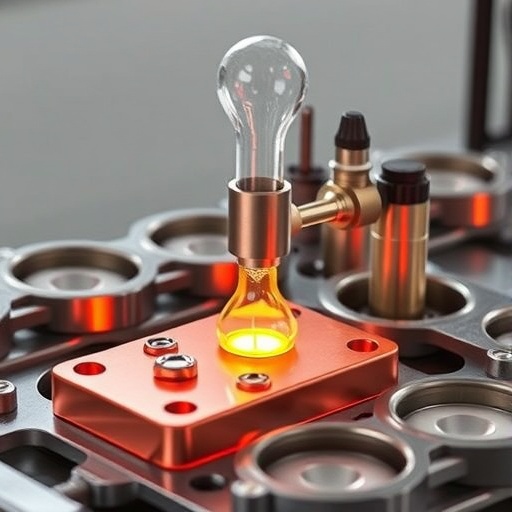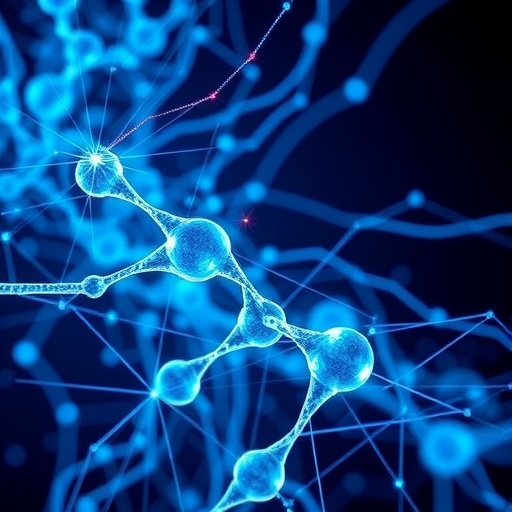PROTECT YOUR DNA WITH QUANTUM TECHNOLOGY
Orgo-Life the new way to the future Advertising by AdpathwayIn the ever-evolving realm of pediatric medicine, the need for precise and efficient diagnostic tools has never been more critical. The advancements in artificial intelligence (AI) have opened doors to innovative methodologies that promise to enhance reliability and accuracy in various clinical evaluations. Among these innovations, a recent study has meticulously examined an AI-based tool designed for bone age assessment, juxtaposing its efficacy against traditional methods such as the Greulich-Pyle and Tanner-Whitehouse 2 assessments. This research serves as a compelling proof of concept, underscoring the potential for AI in revolutionizing pediatric radiology.
Bone age assessment is a pivotal aspect of evaluating children’s growth and development. Clinicians utilize this assessment to identify growth disorders, hormonal irregularities, and other underlying health concerns that may impact a child’s trajectory towards adulthood. The traditional methods, particularly the Greulich-Pyle and Tanner-Whitehouse techniques, have long been the gold standards in this domain. However, these methods require expert radiologists to interpret skeletal images meticulously, which can lead to inconsistencies due to subjective interpretations.
The incorporation of AI in medical imaging is not merely an enhancement; it represents a paradigm shift in how we process and interpret physiological data. The research led by Marinelli et al. highlights an AI-based bone age assessment tool that leverages deep learning algorithms to analyze radiographic images with unprecedented accuracy. By training the AI on a vast dataset of skeletal images, the researchers aimed to refine the model’s capability to predict skeletal maturity accurately.
In their study, the team engaged a diverse pediatric cohort, honing in on the clinical application of the AI tool in live scenarios. What sets this research apart is not merely the AI’s performance metrics but also the implications it holds for immediate clinical practice. The team meticulously compared the AI tool’s assessments against the results derived from the Greulich-Pyle and Tanner-Whitehouse methods, thereby establishing a comprehensive benchmark.
The findings were illuminating. The AI-based tool demonstrated a remarkable alignment with the traditional methodologies, exhibiting a high degree of reliability in determining bone age. This finding is especially noteworthy given the diverse range of cases included in the cohort, which spanned various ages, sexes, and growth patterns. Such versatility is promising for pediatric endocrinologists and radiologists who rely on accurate assessments to devise appropriate treatment plans for children facing growth-related challenges.
Another significant advantage of employing AI in bone age assessment is the speed at which results can be generated. Traditional methods involve meticulous examination that can consume considerable time and resources. In contrast, the AI tool operates with remarkable efficiency, capable of delivering assessments within moments. This time-saving characteristic could be transformative in clinical settings where rapid decision-making is crucial, thus potentially impacting treatment outcomes positively.
Moreover, the technology’s reliance on image processing allows for objective evaluations devoid of human biases. By minimizing variability associated with human interpretation, the AI tool stands to enhance the accuracy of diagnoses significantly. This shift towards a data-driven approach may also reduce incidence rates of misdiagnoses and inappropriate treatments, ensuring that children receive the care and intervention best suited to their individual needs.
Furthermore, the implications of this research extend beyond immediate clinical applications. As AI technologies continue to advance, we stand at the precipice of more sophisticated methods not only in bone age assessment but across various aspects of pediatric healthcare. The potential for cumulative learning means that, over time, these AI tools could refine their algorithms further, continuously improving their predictive accuracy as they assimilate more clinical data.
However, while the study provides compelling evidence supporting the efficacy of AI-based assessments, it also raises questions pertaining to the integration of such technologies into everyday clinical practice. The pathway to adoption must navigate the intricate tapestry of healthcare regulations, practitioner training, and patient acceptance. Engaging with these challenges will be essential for healthcare providers as they explore the implementation of AI tools.
Moreover, while the promise of AI in healthcare is substantial, it evokes critical discussions around data privacy and ethical considerations. As patient data is pivotal in training AI models, ensuring the protection of sensitive medical information remains paramount. The medical community must prioritize establishing robust frameworks for data management and security to foster trust among patients and families.
In conclusion, the research by Marinelli et al. presents a compelling instance of the potential for AI to enhance bone age assessments in pediatric care. The AI tool’s performance relative to traditional methods is a testament to the progress being made in merging technology with healthcare. This proof-of-concept study not only reaffirmed the AI’s accuracy but also opened dialogues about its broader implications, paving the way for future research and technological integration in medicine.
The integration of AI into clinical practice is an exciting endeavor that could reshape pediatric healthcare landscapes. As more studies validate the effectiveness of AI-driven tools, the dialogue surrounding their deployment will only intensify. This research is a crucial stepping stone in realizing the future of diagnostics, where accuracy, speed, and objectivity become the hallmarks of patient care. The journey towards incorporating AI in medicine not only reflects technological advancements but also encompasses the fundamental goal of providing optimal care for our youngest patients.
Subject of Research: AI-based bone age assessment in the pediatric cohort.
Article Title: Proof-of-concept comparison of an artificial intelligence-based bone age assessment tool with Greulich-Pyle and Tanner-Whitehouse version 2 methods in a pediatric cohort
Article References:
Marinelli, L., Lo Mastro, A., Grassi, F. et al. Proof-of-concept comparison of an artificial intelligence-based bone age assessment tool with Greulich-Pyle and Tanner-Whitehouse version 2 methods in a pediatric cohort. Pediatr Radiol (2025). https://doi.org/10.1007/s00247-025-06405-0
Image Credits: AI Generated
DOI: https://doi.org/10.1007/s00247-025-06405-0
Keywords: Pediatric care, artificial intelligence, bone age assessment, radiology, healthcare technology.
Tags: accuracy in medical imagingadvancements in pediatric medicineAI bone age assessmentartificial intelligence in healthcarediagnostic tools in pediatricsGreulich-Pyle assessment comparisongrowth disorder evaluation methodshormonal irregularities in childrenpediatric radiology innovationssubjective interpretation in radiologyTanner-Whitehouse 2 technique analysistraditional bone age methods


 4 hours ago
3
4 hours ago
3





















 English (US) ·
English (US) ·  French (CA) ·
French (CA) ·